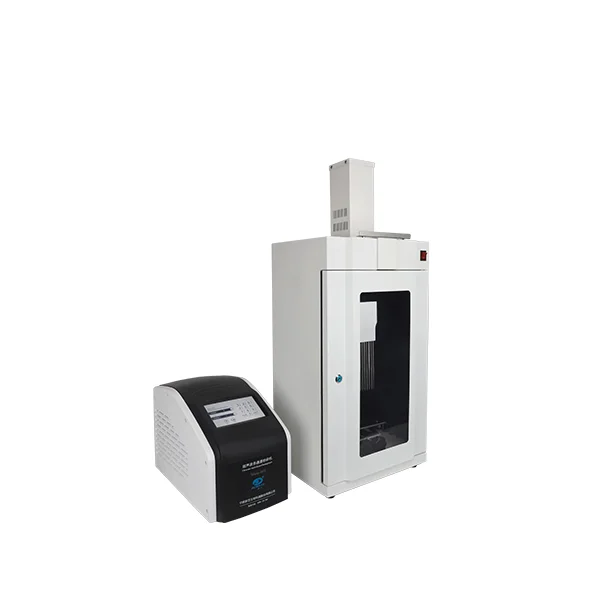- This topic is empty.
-
AuthorPosts
-
2025-09-22 at 2:35 pm #10741
In modern life science research, cell disruption is a common and critical step in laboratory experiments. It directly impacts the results of subsequent protein extraction, nucleic acid isolation, and metabolite analysis. As an essential laboratory instrument, the ultrasonic generator, due to its high efficiency, controllability, and stability, has been widely used in various cell lysis and disruption experiments. This article will explore in depth the advantages, application mechanisms, key operating points, and application areas of ultrasonic generators in cell disruption experiments, providing a comprehensive reference for researchers.
1. Ultrasonic Generator and Its Working Principle
An ultrasonic generator is a laboratory device that generates ultrasonic waves by converting electrical energy into high-frequency mechanical vibrations. When ultrasonic waves propagate through a liquid medium, they produce a large number of tiny bubbles that rapidly expand and collapse, a phenomenon known as ultrasonic cavitation.
The instantaneous collapse of these bubbles generates localized high temperatures, high pressures, and intense microjets, generating powerful mechanical shear forces.
This localized energy disrupts cell membrane structures, achieving rapid lysis.
By adjusting the ultrasonic power, frequency, and duration, efficient disruption can be achieved for different cell types.
It is this principle that gives ultrasonic generators their significant advantages in ultrasonic cell disruption experiments.
2. Basic Concepts of Cell Disruption Experiments
Cell lysis experiments are primarily used to:
Release intracellular substances, such as proteins, nucleic acids, and metabolites.
Ensure extraction efficiency: The degree of disruption directly impacts the accuracy of subsequent separation and analysis.
Adapt to different cell types: Different cell structures, such as bacteria, yeast, eukaryotic cells, or plant cells, determine the difficulty of disruption.
Traditional disruption methods include mechanical grinding, high-pressure homogenization, and chemical lysis, but these methods often suffer from low efficiency, poor controllability, or the potential for damage to active molecules. In contrast, ultrasonic cell disruption, with its precise control and rapid action, has become the preferred method in modern laboratories.

3. Advantages of Ultrasonic Generators in Cell Disruption Experiments
High efficiency and speed: The instantaneous high energy release of ultrasound can disrupt most cell membranes within minutes, significantly reducing experimental time and improving efficiency.
High controllability: The power and sonication time can be adjusted according to cell type and sample volume. Ultrasonic generators are suitable for processing cells of varying sizes and structures, avoiding excessive disruption or incomplete lysis. Preserving Active Ingredients: Ultrasonic disruption is a physical process that prevents irreversible damage to proteins and nucleic acids caused by high temperatures or strong acidic or alkaline environments, facilitating subsequent analysis.
Wide Application: It can process samples ranging from microliter-scale experiments to multi-liter volumes, covering small-scale laboratory studies and pilot-scale preparations.
Easy Operation: The device's simple structure and flexible operation make it easy to train and use, reducing operational complexity and the risk of error for experimenters.
4. Typical Application Cases
4.1 Protein Extraction
Proteins are the most common target in cell lysis experiments. Using an ultrasonic generator can rapidly disrupt cell membranes, allowing for efficient protein release while maintaining functional activity. This is suitable for subsequent immunoblotting (Western blotting), enzyme activity analysis, and mass spectrometry.
4.2 Nucleic Acid Extraction
Cell disruption is a critical step in DNA and RNA extraction. Ultrasonic cell disruption achieves efficient lysis, ensuring nucleic acid integrity and purity, and improving the accuracy of downstream PCR, qPCR, and sequencing experiments.
4.3 Metabolite Analysis
Ultrasonic disruption can rapidly release intracellular metabolites, facilitating cellular metabolism research and drug mechanism analysis. 4.4 Microbial and Plant Cell Disruption
Microorganisms, such as Escherichia coli and yeast, with rigid cell walls, can be efficiently disrupted by adjusting the ultrasonic power.
Plant Cells: Plant cells have thicker cell walls. Ultrasonic disruption combined with auxiliary chemical reagents can achieve complete disruption, improving the extraction efficiency of the target.
5. Key Points for Ultrasonic Cell Disruption Experiments
Sample Preparation
Maintain an appropriate cell suspension concentration, avoiding excessive dilution or concentration.
Use cold buffer to mitigate the thermal effects of ultrasonic treatment.
Choosing the Appropriate Probe and Power
For small-volume samples, use a small-diameter probe to ensure concentrated energy.
Adjust the power and time according to the cell type to avoid excessive disruption.
Batch Processing
For large samples or resistant cells, segmented ultrasonic treatment is recommended to minimize sample temperature rise.
Temperature Control and Cooling
Extended ultrasonic treatments require an ice bath or circulating cooling system to maintain sample stability.
Equipment Maintenance
Promptly clean the ultrasonic probe and container to avoid cross-contamination and equipment wear.
6. Applications of Ultrasonic Cell Disruption
Life Science Research
Ultrasonic cell disruption is a standard procedure in proteomics, genomics, and metabolomics experiments.
Pharmaceutical R&D
Drug carrier preparation, vaccine development, and active ingredient extraction require efficient cell lysis.
Industrial Microbial Fermentation
Ultrasonic disruption can improve yield and efficiency in the extraction of fermentation products (such as enzymes and antibiotics).
Food Science
Ultrasonic disruption is widely used in experiments such as microbial lysis and active ingredient extraction in fermented foods.
Ultrasonic generators offer irreplaceable advantages in cell disruption experiments. Through efficient and controllable ultrasonic cavitation, they achieve rapid and uniform cell lysis while maintaining the integrity of intracellular active substances. Whether for protein extraction, nucleic acid analysis, metabolite research, or microbial or plant cell lysis, ultrasonic generators provide reliable and efficient solutions.
Mastering proper operation and equipment parameter adjustment allows researchers to fully utilize the potential of ultrasonic cell disruption experiments, improving experimental efficiency and data reliability. As essential equipment in modern laboratories, ultrasonic generators have become core tools in fields such as life sciences, pharmaceutical R&D, and industrial bioprocessing.
As a professional ultrasonic generator distributor, Scientz is committed to providing high-performance and highly stable ultrasonic equipment for research institutions, laboratories, and industrial applications. Its products are widely used in multiple experimental fields such as ultrasonic cell disruption, dispersion, emulsification and nanomaterial preparation, supporting different sample volumes and experimental requirements.
http://www.dscientz.com
dscientz -
AuthorPosts
- You must be logged in to reply to this topic.